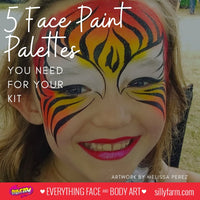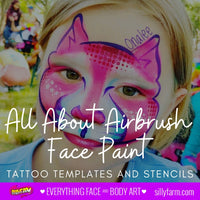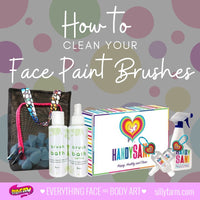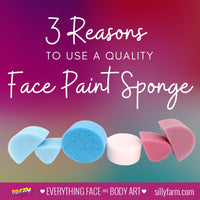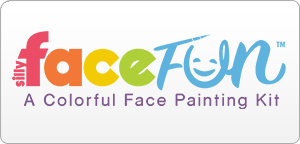Henna Origin and Culture
by Lily Santoya

Henna is a natural and beautiful form of body art. Henna has been practiced and shared amongst women for over 5,000 years and originated in Egypt, where the henna bush grows. Even Cleopatra herself used henna to adorn her body. The henna plant also grows in other similar climates, like China and India. The leaves of the henna bush are taken and ground into a powder form. This is what we use to create our henna recipe. Women have carried this form of body art with them all these years and I find that so inspiring! What an incredible and memorable way to create bonds and beauty among woman kind.

Just as the world and our society evolves with time, henna has also adapted to the current changes in the world. Henna is now shared amongst all people and cultures. Here locally, in our American culture, we have seen henna become mainstream. Madonna, (the singer) wore it on stage in the 90s making henna mainstream for all.
The purpose of henna was originally meant as a bonding experience and the receiving did not choose her design. Her loved ones chose for her. Now we live in a different time, where we choose our own unique design or a symbol that is personalized and sentimental to each one of us. Males have also joined in this practice of henna, both artists and clients.

This form of temporary body art can last anywhere from 3-7days, even up to a month, as I’ve experienced. Henna does have to oxidate, so you will see the henna color change in mocha colored tones. These are the only natural color tones henna can become. The time frame is accomplished by different variables. Quality ingredients play an essential part, as well as a person’s medical background, skin care, and especially after care.


Quality ingredients consist of quality Henna powder from a recent harvest crop year as well as from a reputable henna company. Types of henna powder must also be considered. My favorite is Rajasthani, because of its rich color and long lasting stain. Jamila powder is normally a hit or miss, even with all the right steps, Jamila may or may not stain. Henna also consists of table sugar which helps the henna adhere to your skin while its releasing stain. Some henna artists, like myself, use lemon juice as well. The citric acid helps create a better and more rich stain on your skin. Essential oils also play an important role in the henna recipe curing process. Safe essential oils can be a bit costly, but making skin safe henna is the most important concern for a reputable henna artist. Essential oils, or ‘terps’, as most henna artists refer to them, must be combined carefully and research should be done if you are unsure of the terps you’re using together as well as the desired amount. Too much essential oil or a not so happy combination of two different terps, can lead to burning your friend or client with the henna. So be certain and safe about your recipe and experimental trials when learning. My favorite combination is natural essential French lavender and tea tree oil.


A person’s medical background also plays an essential role in receiving henna. A person that is highly medicated and or dehydrated will likely have a more difficult time staining than other people. Chlorine during the summer months also fades henna pretty quickly. Henna doesn’t like chemicals so after care is important to keep a beautiful deep stain for as long as possible.
Have you ever seen those henna designs that are so dark they seem black or even red in color? I drool over them too. These are accomplished by allowing the design to dry and wrapping the henna in either medical tape, or toilet paper and saran wrap, overnight or longer. This allows the design to cure with the heat of your body and last so much longer. The red color is achieved naturally, by using a special henna powder from a different region. The deeper the orange color after removal, the deeper and longer lasting stain you’ll have. This is why most henna artists ask that you leave your design alone for a few hours. These designs last 5-7 days.

Troubleshooting with henna is also essential knowledge to have. After making your henna recipe and you’ve successfully achieved a good staining henna, storing your henna will be key for its lifespan. It’s advised that you store your henna in the freezer. This will help keep the henna as fresh as possible. When you’re out at an event and you have your frozen henna cones, if you are in a really hot climate, it's best to take a Yeti cup or a small ice chest to keep the henna cones cool until you’re ready to use them. Thawing doesn’t take henna cones long at all.
Let’s say that your henna design didn’t stain. I’ve encountered this countless times with the henna artists I work beside. The artist was working with expired henna. Clients have come back to the booth and complained that it didn’t stain. In this situation, your client feels cheated and will probably develop trust issues with the next henna artist or they may not ever get henna again. This damages our business indefinitely. The problem I noticed is the storage of the henna. They used a bottle, which ages henna. Also, the henna was stored in a ziploc bag. When you’re transporting and storing henna, make sure to find an airtight seal way. Henna cones do provide this airtight seal, because of the way we roll them. I’ve had my henna cone sitting in a friend’s car for 2 weeks during our summer and the henna still stained! That’s not to say you shouldn’t be careful to store it, it means my henna batch recipe exceeded my expectations. Henna is said to last up to a year in your freezer and a week in the refrigerator. You can definitely experiment with your own henna at home.
Ever notice in some henna designs, there are lighter and darker parts of the design? This happens because henna seems to be more receptive to thicker skin. Our fingers, hands, feet, especially the palms stain so much deeper and darker. The first recorded henna design was a circle in the palms of the hands. It is said that our ancestors would raise and face their henna palms towards the sun in order to show love and create a deeper connection with Mother Earth as well as the sun.

Because of these natural ingredients, it is said that henna has anti aging properties. Of course, it may take a few years to have my own review about that theory.
Henna Application is also something to consider. While some henna artists prefer a plastic bottle and needle tip for application, this brings some down sides. Using a bottle for henna application, as we’ve talked about earlier, allows air to flow into the bottle, thus aging the henna as it sits in the bottle. When using a bottle and needle tip for henna, it can also cause great pain in your dominant hand. Henna requires having a consistent pressure during the henna application. Over time, this could cause real damage. The original way henna was applied was with a cone, hence the name of the original tool, henna cone. Using the henna cone is a pain free way to apply henna designs. I sometimes henna for 10 hours during a festival and I feel no pain or exhaustion from using henna cones.

If you choose to roll your own henna cones, this will take some practice until you get the hang of it. I personally have a “how to” video on my Instagram; Lilysantoyabodyart is my handle. You can also YouTube on rolling henna cones. This is a great skill to learn if you commit to henna. Remember the more you practice, the better and more skilled you become. This is true in henna as well, for making henna cones, making henna itself, and creating new innovative designs.
Males have also made quite the imprint in the henna culture here in America. What once was woman dominated, henna has opened its arms to the male community. There are a few male henna artists around the world that excel in gorgeous designs and techniques. Jason Alan is one that I have followed for a few years now. His love for the practice and execution is somewhat magical. Males have also joined in getting henna, creating what’s referred to as Menna. ‘Menna’, or male henna has been sky rocketing into the henna culture. Most of these designs consist of geometric designs. The Moroccan culture is known for their incredible geometric type designs. These intriguing designs help us to create for males who would like to share in the henna experience.

With Henna, each symbol has a representation or meaning. Take the lotus flower for example, this symbol has always represented the female ability to carry and create life. I adore using this symbol. Henna mostly using florals represents growth and beauty. Ganesha, better known as the elephant, is the symbol for all new beginnings. Ganesha is used very commonly in henna and more so in the Indian culture. A really fun way to learn more about henna culture and symbols is researching their meaning. There’s so much to learn.
Some artists use henna to create more scary designs, for more reputable henna artists around the world, this is frowned upon. Henna was originally meant to beautify, share in a loving, bonding, and create a positive experience. That’s not to say you wouldn’t receive that from asking for a scary design, but the original purpose is definitely at odds with these types of designs.

American culture has also brought glitter into the mix! I mean, who doesn’t love glitter, right? Since henna is applied wet, this creates a perfect opportunity to beautify and glamorize henna with glitter. I personally find this as a great tool actually with festival clientele, who maybe would forget the henna was there and accidentally smudge the design. Glitter provides a bright and bold design so it seems to be easier to remember for the client that the henna is still wet. Of course the glitter falls off when the henna dries out and falls off. I’d also recommend using cosmetic glitter, just to give your client a safe experience. My favorite glitter to use are the more iridescent glitter line from Mama Clown. I adore using fruit punch, bubblegum pink, magenta, the light green glitter is also so incredibly beautiful on top of the henna design. While glitter isn’t essential to the henna design, it sure sparks interest amongst children, teens, and mom’s alike.

Practice tools can be a helpful way to gain more experience to become more comfortable and skilled with henna. Some henna artists recommend sketching henna designs on paper. I have created a henna practice sheet as well as a practice hand. Both are wipeable and reusable time after time. I personally practiced henna everyday for 8 months until I gained the confidence and speed to offer henna as a service. I started with more simple henna designs, once I had these shapes and symbols down, I would try more challenging designs. With my henna practice sheet, you’ll learn the base symbols and shapes you will use in essentially each and every henna design. These tools can be found in my etsy shop called SparrowStencilSupply. You’ll find these and more helpful tools.

With this, I thank you for taking the time to learn about the henna origin and culture. I welcome you to your very special henna journey and hope that you develop a love and find the tranquility that comes with practicing henna. The experiences and people that you meet and bond with, is really something truly unforgettable. Enjoy your new journey!



